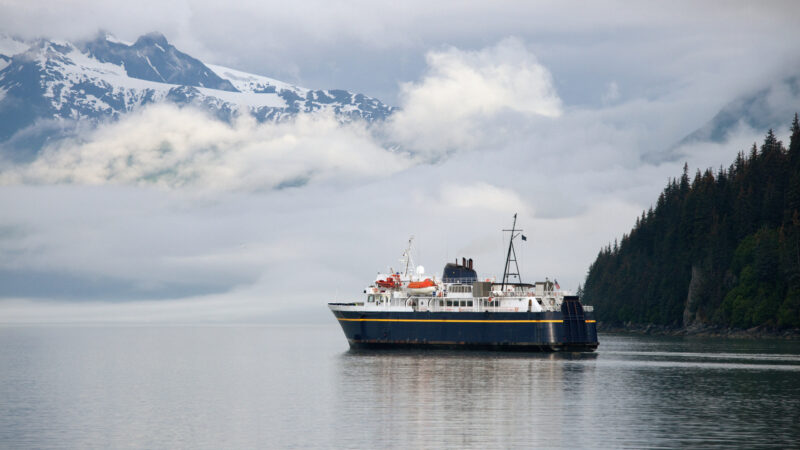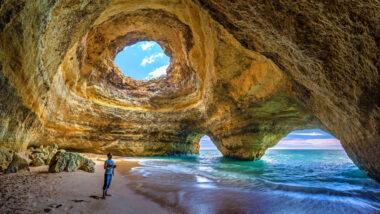Table of Contents Show
Did you know that some towns in Alaska are only accessible by boat or plane? Even Glacier Bay National Park and Preserve and the capital city of Juneau are cut off from the rest of the state. For locals and tourists, the Alaska Marine Highway System is the only option for traveling and moving goods.
Let’s learn more about this ferry system so you can plan your Alaskan getaway!
About the Alaska Marine Highway
Some places in Alaska aren’t accessible except by boat or plane. The Alaska Marine Highway System provides dependable transportation of people, goods, and vehicles to over 30 communities across 3,500 miles of coastline.
The ferries travel from Bellingham, Washington, to Dutch Harbor in the Aleutian Chain. The Alaska ferry system provides a unique opportunity for travelers to experience the rugged coastal landscape, diverse culture, and recreational activities.
We knew we had to try this unique way of travel when visiting Alaska. Read on to learn everything you need to know before you book your own adventure via the Alaska Marine Highway!
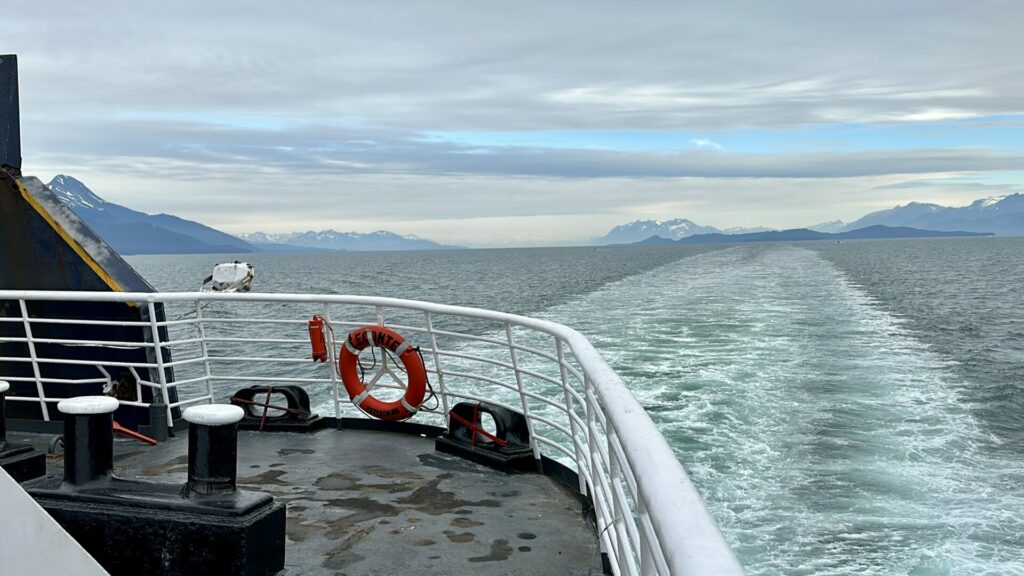
How Long Has the Alaska Ferry System Operated?
The Alaska Marine Highway System began in the late 1940s when Steve Homer, Ray Gelotte, and Gustav Gelotte bought an ex-U.S. Navy landing craft and started Chilkoot Motorship Lines. Tee Harbor, Haines, and Skagway were the first locations with ramps for transporting people, goods, and vehicles.
About a decade later, the company faced bankruptcy, and the Territorial Government purchased it in 1951.
In 1959, after Alaska became the 49th state, voters approved expanding this marine highway system, commissioning new vessels and docks throughout Southeast Alaska.
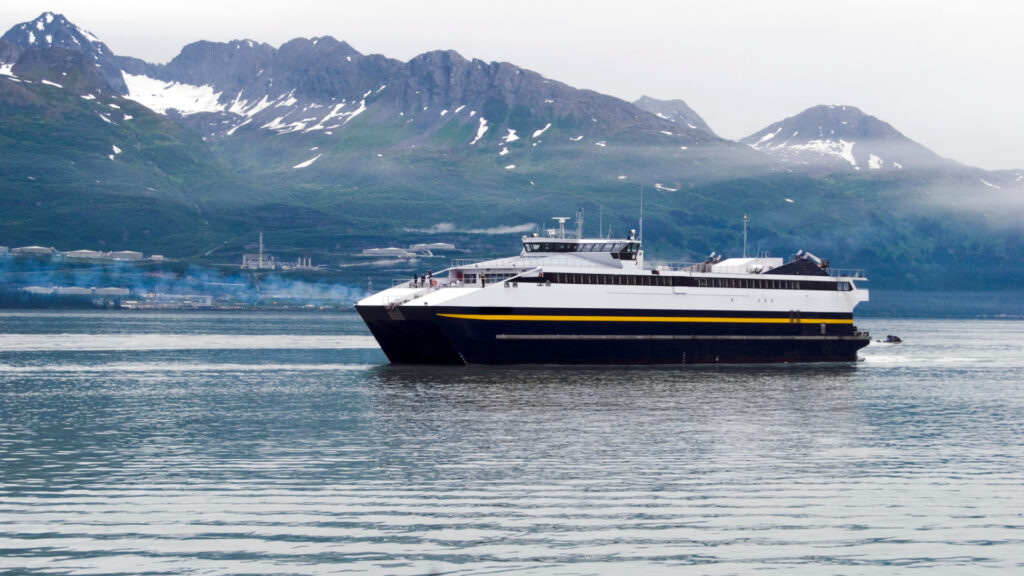
Where the Ferries Of the Alaska Marine Highway Go
Today, the ferries travel along the entire southern coast of Alaska — from Bellingham, Washington, through Ketchikan, then Junuea, over to the Kenai Peninsula, and finally all the way west to the Aleutian Islands.
The Alaska ferry system provides connections to otherwise remote and isolated communities. It includes popular tourist destinations in the route like Gustavus, the gateway to Glacier Bay National Park, and Whittier, which sits along Prince William Sound.
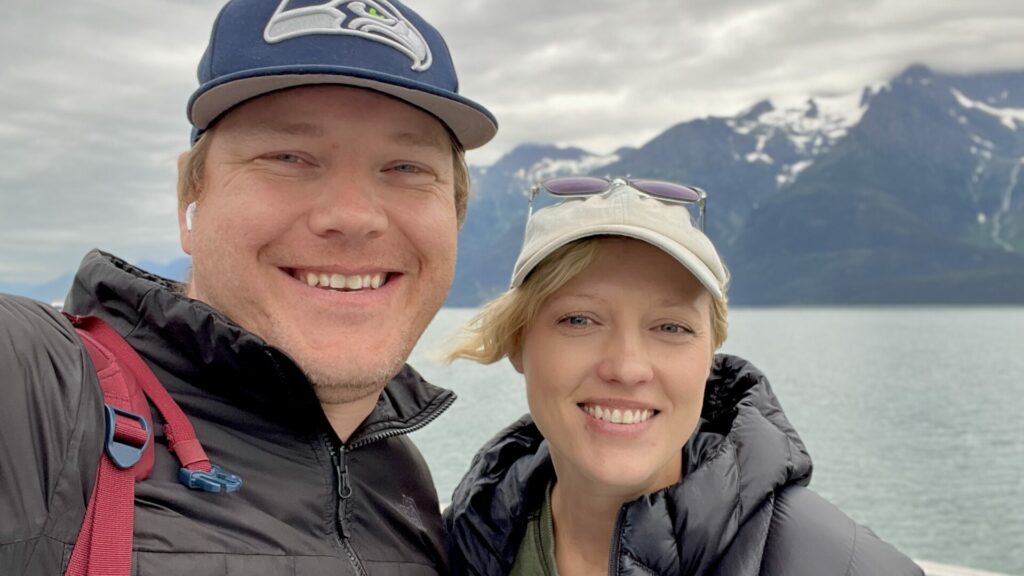
How Many Ferries Travel the Alaska Marine Highway?
The men who started the Alaska Marine Highway began with one ex-U.S. Navy landing craft, which soon proved too small. Today, there are four mainline vessels and five day-boat and shuttle ferries.
The mainline vessels are the largest ships capable of carrying large shipping containers. They typically take more than a day to travel between start and end ports. Day boats and shuttles connect the smaller communities along the route.
Are Vehicles Allowed on the Alaska Ferry System?
All vessels in the Alaska ferry system have different vehicle requirements. Although they are all capable of moving vehicles, the size limitations vary. When you make reservations, it’s critical to communicate the accurate overall length of your vehicle or combined vehicles.
The Alaska ferry system transports standard vehicles, oversized vehicles, motorcycles, RVs, towed vehicles like campers and trailers, unaccompanied vehicles, and commercial vehicles.
If you travel with your RV aboard a ferry, you cannot sleep, eat, or lounge inside the vehicle while the vessel moves because there is no access to the car deck. You won’t find any hookups on board, and you must turn off propane bottles before boarding.
Pro Tip: If it’s your first time visiting Alaska, you’ll want to make sure you pack correctly. Take a look at our tried and true packing guide for Alaska!
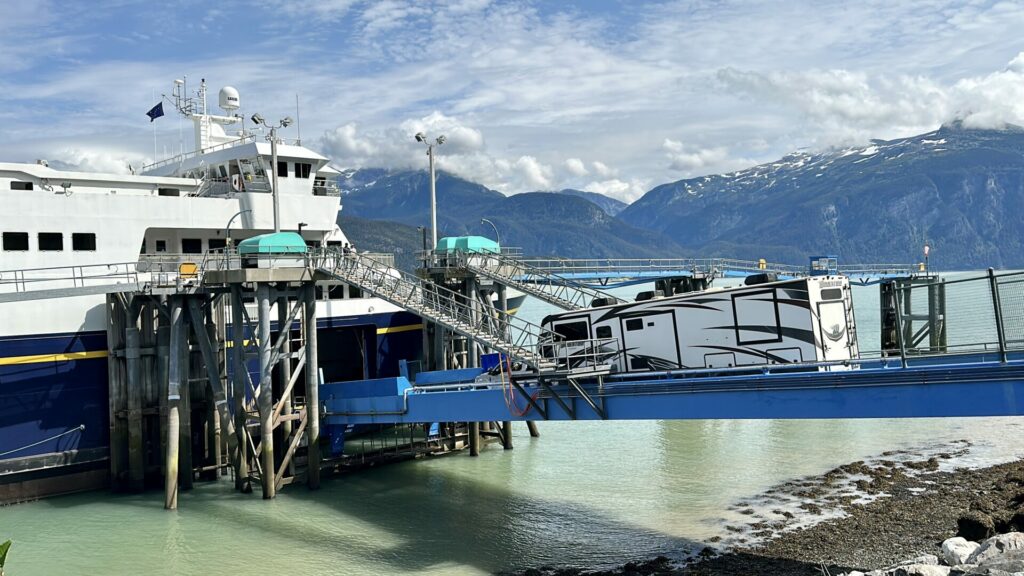
Are Pets Allowed on the Alaska Ferry System?
Yes, pets are allowed on the Alaska ferries, but with restrictions. Animals must remain on the car deck during travel. Pets must stay in a travel carrier or remain in the vehicle. They are not allowed to be inside your RV.
Because access to the car deck is restricted while the ferry is moving, there are 15-minute pet checks permitted every eight hours. However, owners can visit the car deck anytime the vessel docks at a port.
These restrictions were the main reason we chose to use the Marine Highway for shorter distances. The longest ferry ride we took with our dog, Carmen, was six hours. Additionally, one of those ferry rides had a stop halfway through, so we were able to take her off the ferry for a quick walk and potty break while they loaded the passengers. No worse than a travel day in the truck for her!
Owners must also bring a health certificate for dogs or cats if traveling into the state via ferry. However, a health certificate is not required if you’re just traveling between ports within Alaska like we were. Be sure to check out the Division of Environmental Health website to learn more about traveling with pets in Alaska.
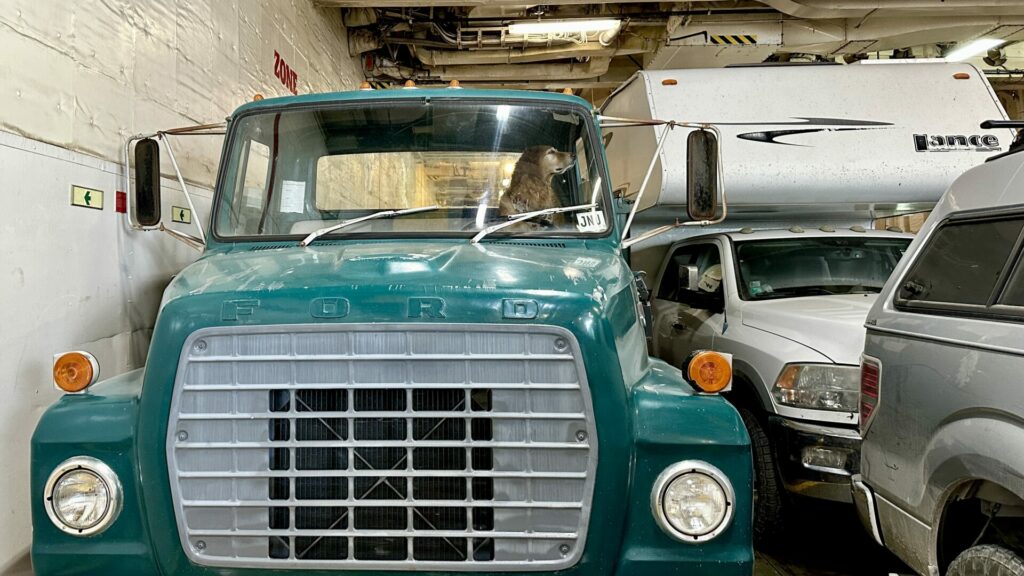
When to Check in for Your Ferry Ride
If traveling without a vehicle, you must check in two hours before departure in Bellingham and Juneau. All other ports require check-in one hour before leaving. There is a security inspection at each port, and all guests must be on board 15 minutes before departure.
If you’re traveling with a vehicle, you must arrive earlier. They will board vehicles in specific lanes for efficiency, so make sure to arrive at your scheduled time.
Depending on the port, you may check in three hours before departure or only one hour before leaving. When you purchase your ticket, it will state your arrival time.
Don’t ignore your arrival time if your vehicle is going on the ferry! Our second time using the ferry system, we were half an hour late (still an hour before departure time) and barely made it to our lane. It would have been rather frustrating for the crew to have to squeeze our truck camper in. They organize the vehicle perfectly when loading; if it’s a full boat, they need everyone there on time to avoid a delayed departure.
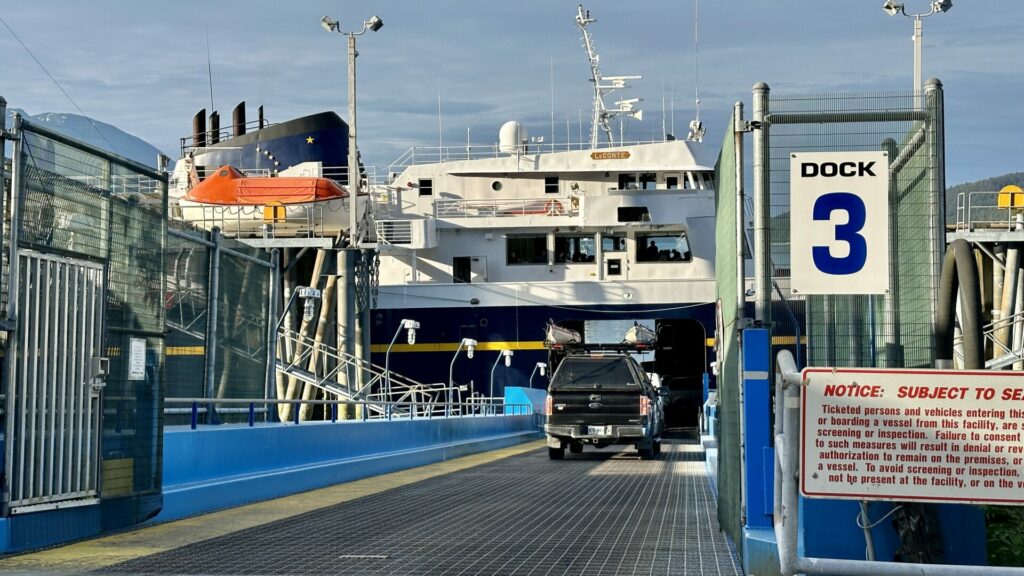
What Identification Is Required to Board the Ferry?
Americans only need to show a government-issued ID such as a driver’s license, passport, or military ID if they travel within U.S. ports. You must show a valid passport if traveling from a Canadian port to a U.S. port or visa versa. U.S. residents who aren’t citizens must provide their alien registration receipt cards.
Can I Stay Overnight on the Ferry?
Depending on which vessel you board along the Alaska Marine Highway System, there are opportunities for overnight stays. Cabins provide single or double bunk berths, and most have private bathrooms. They’re sold per trip and not per person or per night. Not every vessel has cabins or public showers.
You can camp in tents on the upper decks of all vessels. There are also recliner lounges where guests can sleep. So you can bring a small tent and sleeping bag aboard any Alaska Marine Highway ferry.
Keep in Mind: Can RVs go on ferries? You’ve already learned from this article that they can, but here’s everything you need to know before booking your ferry trip!
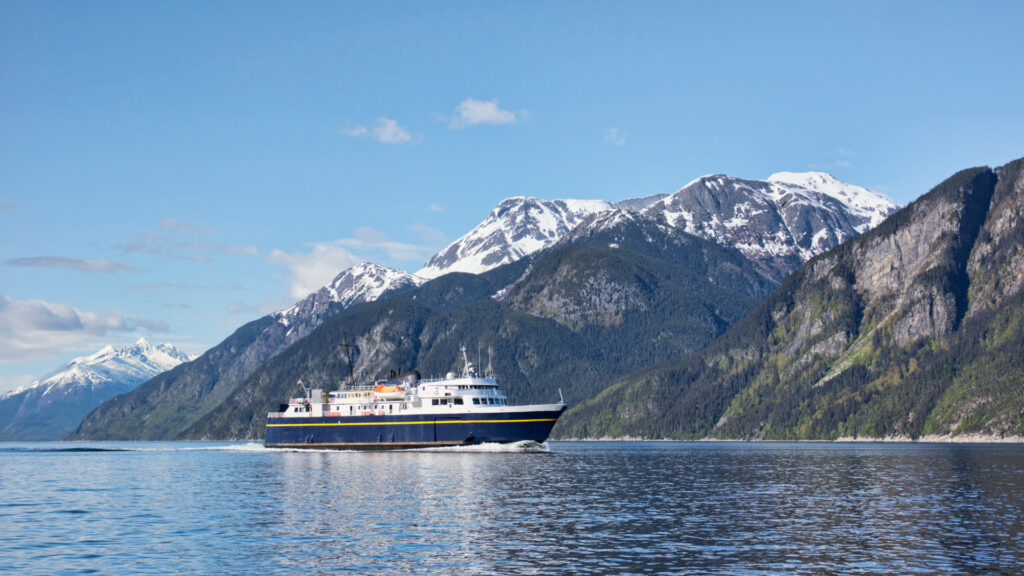
Cost For Traveling the Alaska Marine Highway
Just like airfares vary depending on location and length of flight, ferry rates also vary. Although they suspended dynamic pricing for 2023, the Alaska Marine Highway System has used it in the past as availability decreased. Regardless, the best rates are available the earlier you book your reservations.
Here are a few examples. Two adults traveling in a 30-foot motorhome from Bellingham to Juneau on a Friday during the summer months will pay almost $4,300. Two adults and three children traveling without an RV on the same ferry will pay a little over $1,600.
One adult traveling on the same ferry with a standard vehicle will pay almost $1,600. If you also choose to rent a cabin, it will cost anywhere from $523 to $800 more.
Now, the prices will be lower when traveling shorter distances, like from Skagway to Juneau. With our 25-foot truck camper and two adults, almost all of our ferry rides came to $399 each way. For us, that was well worth it to see parts of Alaska you can’t get to via road.
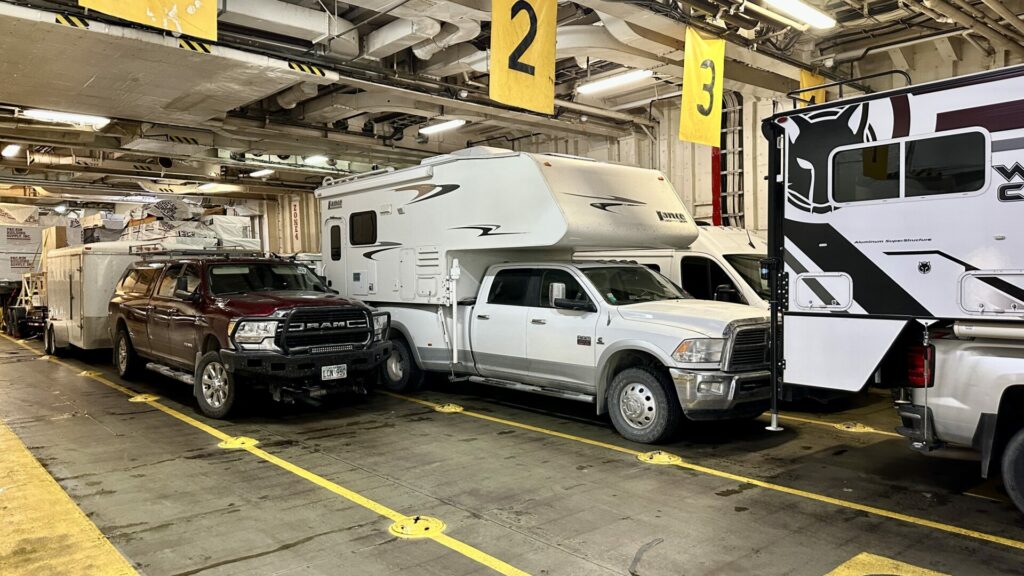
Travel the Alaska Marine Highway: America’s Only Marine Route Designated a National Scenic Byway
The Alaska Marine Highway is America’s only marine route designated a National Scenic Byway. It’s a fantastic way to see the rugged landscape of Alaska’s coastline and visit these small fishing communities. But it’s not cheap.
However, it’s an unforgettable adventure as you meet other travelers and locals, shop and dine in small coastal communities, and enjoy numerous recreational activities.
Would you consider taking the Alaska Marine Highway the next time you’re traveling in Alaska?




